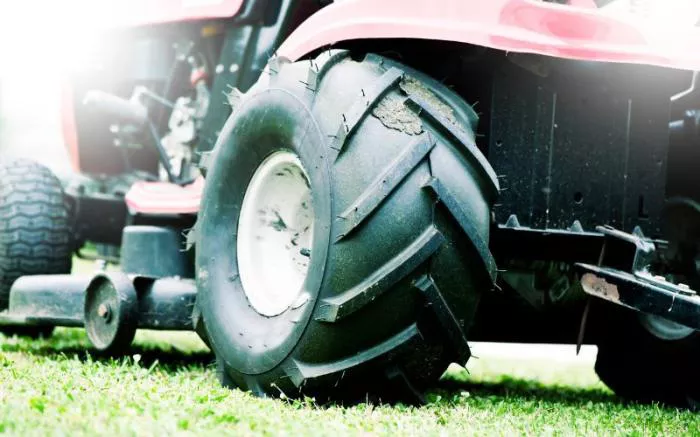Riding lawn mowers are essential for maintaining large yards, providing efficiency and ease compared to push mowers. The pulley system is a critical part of the mower’s operation, ensuring smooth power transfer from the engine to the cutting blades. When a pulley fails, the mower may struggle to cut grass, produce unusual noises, or even stop working entirely. Fixing a faulty pulley requires basic mechanical skills and the right tools. This guide will walk you through identifying, diagnosing, and repairing a damaged pulley to restore your mower’s performance.
Understanding the Pulley System
The pulley system on a riding lawn mower consists of several components. The main parts include the drive pulley, idler pulley, and blade pulley. These pulleys work together to keep the belts moving. If one pulley fails, the entire system can stop working.
Drive Pulley: This pulley connects to the engine. It transfers power to the belts.
Idler Pulley: This pulley keeps tension on the belt. It ensures the belt does not slip.
Blade Pulley: This pulley connects to the mower deck. It spins the cutting blades.
A damaged pulley can cause several problems. The mower may make strange noises. The blades may not spin. The belt may slip off. Identifying the issue early can prevent further damage.
Signs of a Faulty Pulley
Before fixing a pulley, you must confirm it is the problem. Look for these common signs:
Unusual Noises: A squealing or grinding sound often means a pulley is worn out.
Belt Slippage: If the belt keeps coming off, the pulley may be misaligned.
Loose Pulley: A wobbly pulley indicates bearing failure or a loose bolt.
Visible Damage: Cracks or chips on the pulley mean it needs replacement.
If you notice any of these signs, inspect the pulley system carefully.
Tools Needed for the Repair
Fixing a pulley requires basic tools. Gather these before starting:
Wrenches and Sockets: Needed to loosen and tighten bolts.
Screwdriver: Useful for removing covers or adjusting components.
Pliers: Helps with belt tension and small adjustments.
Jack and Jack Stands: Required to lift the mower safely.
Replacement Pulley: If the old one is damaged, you will need a new one.
Having the right tools makes the job easier.
Steps to Fix a Pulley on a Riding Lawn Mower
Follow these steps to repair or replace a faulty pulley.
Step One: Disconnect the Battery
Safety is the first priority. Disconnect the battery to prevent accidental starts. Remove the negative cable first. This ensures no electrical power reaches the engine.
Step Two: Lift the Mower Safely
Use a jack to lift the mower. Place jack stands under the frame for support. Never work under a mower supported only by a jack. Ensure the mower is stable before proceeding.
Step Three: Remove the Mower Deck
The mower deck houses the blade pulley. Remove the deck to access the pulley system. Unbolt the deck from the mower frame. Disconnect any belts attached to the deck. Set the deck aside carefully.
Step Four: Inspect the Pulley System
Check all pulleys for damage. Spin each pulley by hand. A good pulley should turn smoothly. If a pulley wobbles or makes noise, it needs repair or replacement.
Step Five: Remove the Damaged Pulley
Use a wrench to loosen the bolt holding the pulley. Some pulleys have a retaining clip. Remove the clip before taking the pulley off. Keep all small parts in a safe place.
Step Six: Install the New Pulley
Place the new pulley in the correct position. Tighten the bolt securely. If the pulley has a bearing, apply grease before installation. Ensure the pulley spins freely without wobbling.
Step Seven: Reattach the Belt
Route the belt around the new pulley. Follow the original belt path. Use a belt diagram if needed. Ensure the belt is properly tensioned. Too loose or too tight can cause problems.
Step Eight: Reinstall the Mower Deck
Place the deck back under the mower. Secure it with bolts. Reconnect any belts to the engine pulley. Double-check all connections.
Step Nine: Lower the Mower
Remove the jack stands carefully. Lower the mower to the ground. Reconnect the battery. Start the engine and test the pulley system. Listen for unusual noises. Ensure the blades engage properly.
Common Mistakes to Avoid
Fixing a pulley is straightforward if done correctly. Avoid these mistakes:
Skipping Safety Steps: Always disconnect the battery and use jack stands.
Ignoring Belt Alignment: A misaligned belt will slip or wear out quickly.
Overlooking Other Components: Check the belt and bearings while replacing the pulley.
Using Wrong Tools: Improper tools can damage bolts or pulleys.
Taking time to do the job right saves future repairs.
Maintaining the Pulley System
Regular maintenance prevents pulley problems. Follow these tips:
Clean the Pulleys: Dirt and grass buildup can cause wear.
Check Belt Tension: Adjust if the belt feels loose.
Lubricate Bearings: Some pulleys need occasional grease.
Inspect for Damage: Look for cracks or rust during routine checks.
A well-maintained pulley system lasts longer.
When to Seek Professional Help
Some pulley issues require expert attention. Consider professional help if:
The Pulley is Seized: If it won’t turn, the bearing may be fused.
The Shaft is Damaged: A bent shaft needs specialized tools.
You Lack the Right Tools: Improper repairs can cause more damage.
A professional can diagnose and fix complex problems.
Conclusion
Fixing a pulley on a riding lawn mower is a manageable task. Understanding the pulley system helps identify issues. Using the right tools ensures a smooth repair. Following safety steps prevents accidents. Regular maintenance keeps the pulley system working well. If the problem seems too difficult, seek professional help. A properly functioning pulley ensures your mower runs efficiently. By following this guide, you can keep your riding lawn mower in top condition. Happy mowing!
Related topics:

